Creating mouth-watering images is easier with the best lens for food photography. Whether you’re shooting for a food blog or restaurant marketing, the best food lens is vital.
But what lens is best for food photography? Do you need a zoom or a prime lens? What focal length is best when shooting food? And how much do you need to spend on a food photography lens? We answer these questions and give you our top recommendations.
Our top food photography lens is the Canon RF 28-70mm F/2L USM. Its wide zoom range makes it incredibly versatile, letting you capture different shots. The optical quality is of the highest order. Plus, its wide maximum aperture gives you excellent depth of field control.

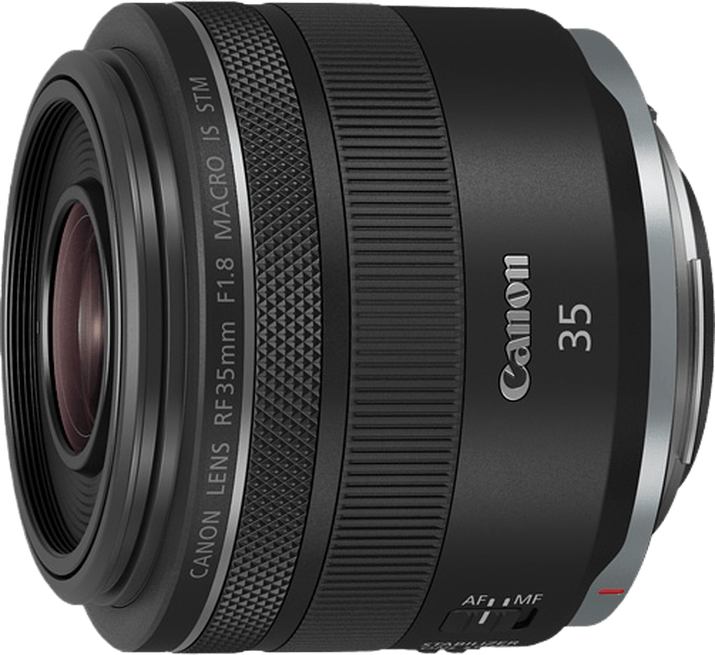
What Is the Best Lens for Food Photography?
The best lens for food photography helps you get the best results from your culinary photoshoots. Our top three picks for the top brands are the Canon RF 28-70mm F/2L USM, Nikon Nikkor Z MC 105mm F/2.8 VR S, and Sony FE 90mm F/2.8 Macro G OSS.
The trouble is that there are several types of food photography shoots. And different photographers prefer different types of lenses. So, which lens is best for you?
As a food photographer, you have a wide range of lenses available. Of course, you can choose between zoom and prime lenses. But you also have to consider focal length.
Many food photographers like to use standard-angle lenses. Something around 50mm is versatile, letting you get close or capture wider shots. But others like to use telephoto lenses.
Often, focal lengths of 70mm to 120mm are associated with portrait photography. But they work incredibly well for close-ups in food photography.
Also, take note of a lens’s maximum aperture. For food photography, you want it as wide as possible. This gives you good low-light performance and better depth-of-field control. Highlighting the food with an artistic bokeh effect is a great idea.
Here’s a quick rundown of the best lenses for food photography. The following section looks at each lens in more detail. Our article concludes with a buyer’s guide for food photography lenses.
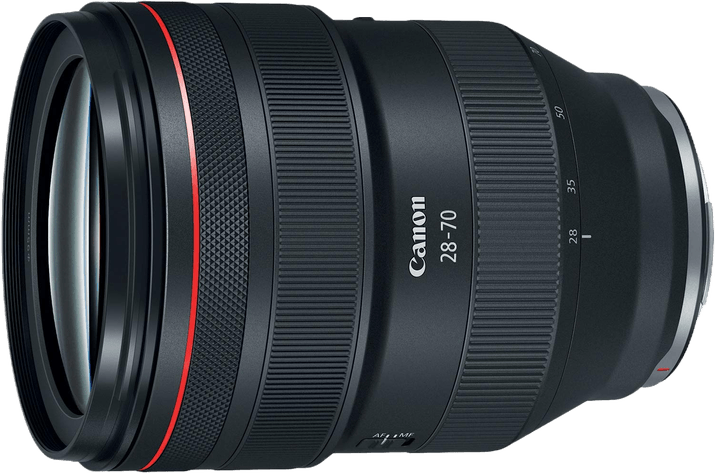
- Exceptional low-light performance with f/2 aperture
- Enhanced control over depth for subject isolation
- High image quality and direct setting changes
- Resistant to dust and water, fluorine coated

- Delivers stunning close-up imagery at 1.4x magnification
- Bright f/2.8 aperture for blurred backgrounds and low light
- 5-stop Optical Image Stabilizer for sharp, stable shots
- SA Control Ring adjusts bokeh shape and character

- 1:1 magnification level for stunning close-ups
- Fast f/1.8 maximum aperture for low-light performance
- Built-in image stabilization improves exposure control
- Manual control ring on barrel for hands-on functionality
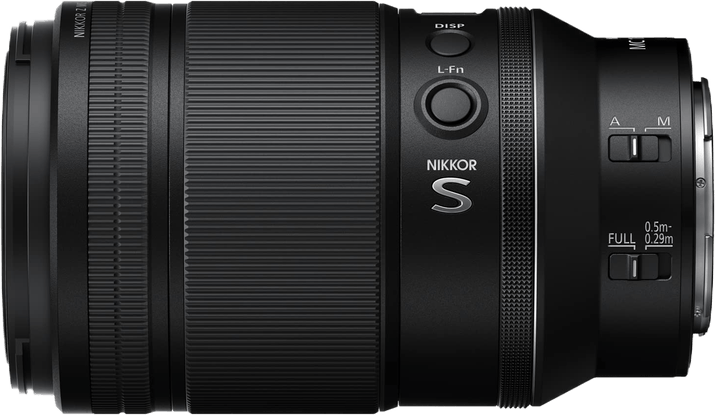
- Reveals hidden worlds in life-size 1:1 magnification
- Sharpness, contrast, and clarity with minimal distortion
- Versatile focal length for comfortable distance shooting
- Vibration Reduction for blur-free handheld shots
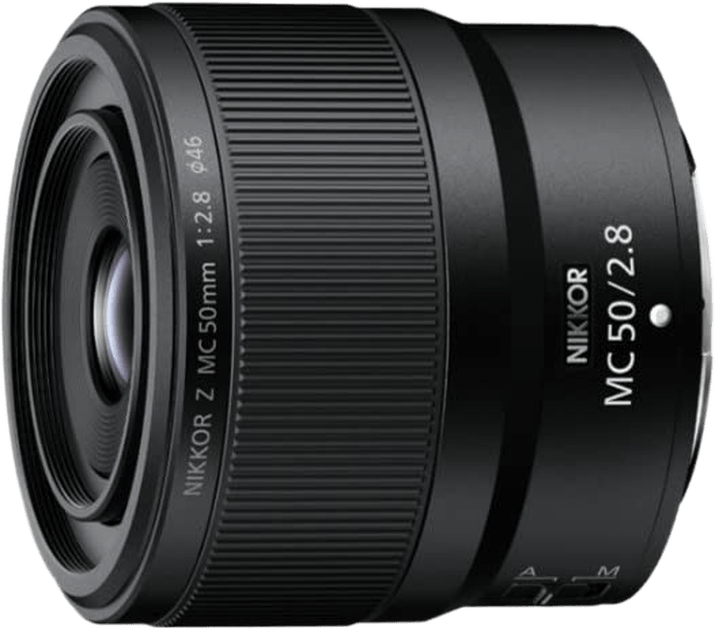
- Macro standard 1:1 magnification level
- Fast f/2.8 maximum aperture
- Aspherical and ED elements reduce glare and distortion
- Weather-sealed with protective fluorine coating on glass

- Versatile for various photo and video applications
- Stunning clarity, high resolution, and natural bokeh
- Fast, accurate autofocusing with Multi-Focusing System
- Dust- and moisture-resistant for worry-free durability
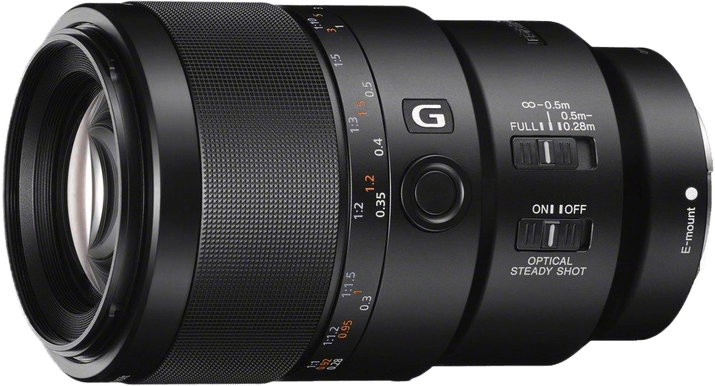
- Advanced image stabilization for clear handheld shots
- Exceptional bokeh with a 9-blade circular aperture
- Super Nano AR Coating and Super ED glass
- Precise focusing with Direct Drive SSM technology
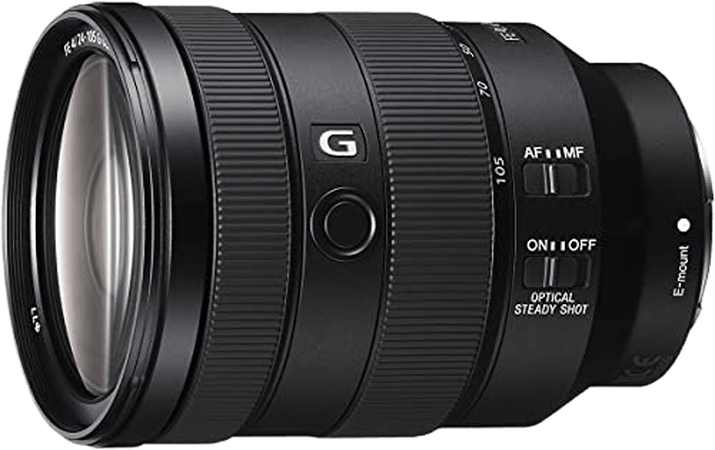
- Versatile 24-105mm range for various subjects
- G-lens design ensures high resolution
- Constant f/4 aperture for consistent depth of field
- Minimum focus distance of 1.25 ft / 38 cm
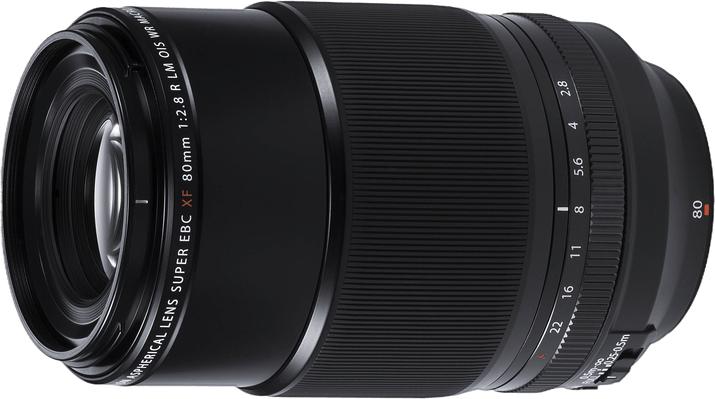
- High-quality macro shooting from any distance
- Beautiful bokeh and high resolving power
- 5-stop image stabilization for sharp images
- Weather-resistant, perfect for outdoor shoots

- Offers versatile 76-214mm equivalent focal lengths
- Exceptional low-light performance with f/2.8 aperture
- Top-tier image stabilization for sharp shots
- Weather-resistant for shooting in any conditions

- Versatile 50mm prime lens
- Sensational aspherical, ED and UHR glass elements
- Fast and smooth focusing with no focus breathing
- Dust- and splash-resistant for added durability

- Exceptional optical structure with 14 lens elements
- Part of the world-renowned Sigma Global Vision Line
- Newly designed hyper sonic motor for quick AF control
- Works with mount converter MC-11 for Sony E-mount users
12 Best Lenses for Food Photography
Now, let’s look at the best food photography lenses. We review a wide range of lenses for any food photography style.
There are prime and zoom lenses. There are standard-angle lenses and telephoto lenses. We also recommend food lenses for all the top camera brands. We also provide DSLR lens alternatives where applicable.
1. Canon RF 28-70mm F/2L USM

| Brand |
Brand
Canon
|
| Maximum Aperture |
Maximum Aperture
f/ 2.0
|
| Focal Length Range |
Focal Length Range
28-70 mm
|
| Image Stabilization |
Image Stabilization
|
| Other Key Features |
Other Key Features
Custom control ring, water-resistant, fluorine coating
|
| Best For |
Best For
Those who need a versatile, high-quality Canon zoom lens
|
The RF 28-70mm F/2L USM is the best lens for food photography for Canon mirrorless users. The optical quality is fantastic, with little distortion or aberration, even at the edges. It also has a 12-pin connection system for better communication with the camera.
The focal length range is ideal for food photography. The 24 mm end lets you shoot wide shots. This is handy for confined spaces like kitchens. The 70 mm end enables you to capture detailed close-ups.
The excellent build quality doesn’t stop with the expertly crafted glass elements. The barrel is also durable and water-resistant. This gives you peace of mind when working in culinary environments. The fluorine coating protects the outer elements against water, oil, and grease.
The Canon RF 28-70mm F/2L USM is compatible with Canon’s mirrorless cameras. But if you’re still using a Canon DSLR, the Canon EF 24-70mm F/2.8L II USM is the perfect alternative.
2. Canon RF 100mm F/2.8L Macro IS USM

| Brand |
Brand
Canon
|
| Maximum Aperture |
Maximum Aperture
f/ 2.8
|
| Focal Length Range |
Focal Length Range
100 mm
|
| Image Stabilization |
Image Stabilization
|
| Other Key Features |
Other Key Features
Angular and Shift IS, SA control ring, custom control ring, dust and water resistant
|
| Best For |
Best For
Those who want a quality Canon telephoto lens for close-ups
|
The RF 100mm F/2.8L Macro IS USM is one of Canon’s finest macro lenses. But it’s not limited to macro photography. It’s also an ideal choice for food photographers!
The 100mm focal length lets you shoot tightly cropped, detailed close-ups. It also has a unique Spherical Aberration control ring. It lets you change the shape and texture of the background and foreground bokeh.
The lens offers five stops of exposure compensation thanks to its built-in image stabilization. This hybrid stabilization system also compensates for angular and shift camera shake.
You can’t fault the Canon RF 100mm F/2.8L Macro IS USM‘s picture quality. Edge-to-edge sharpness is guaranteed.
It’s a Canon RF lens for mirrorless cameras. But you can get the Canon EF 100mm F/2.8L IS USM for a DSLR camera.
3. Canon RF 35mm F/1.8 IS Macro STM

| Brand |
Brand
Canon
|
| Maximum Aperture |
Maximum Aperture
f/ 1.8
|
| Focal Length Range |
Focal Length Range
35 mm
|
| Image Stabilization |
Image Stabilization
|
| Other Key Features |
Other Key Features
Custom control ring, 12-pin communication
|
| Best For |
Best For
Those who need of a versatile, affordable standard Canon prime lens
|
The Canon RF 35mm F/1.8 IS Macro STM is an incredibly versatile prime lens for food photography. Its 35mm focal length gives a wide field of view, which is great for wider scenes. But the macro magnification lets you shoot close-ups as well.
An f/1.8 max aperture gives excellent exposure control, letting you work in low-light situations without a flash. And the image stabilization gives you even more exposure control in dimly lit settings.
Thanks to the custom control ring on the barrel, you have more manual controls. The 12-pin communication system improves response times between the camera and lens.
The affordable price tag makes the Canon RF 35mm F/1.8 IS Macro STM a great food lens for photographers on a budget. Considering its image quality, it offers excellent value for your money.
You can buy the DSLR equivalent Canon EF 35mm F/2 IS USM used or renewed.
4. Nikon Nikkor Z MC 105mm F/2.8 VR S

| Brand |
Brand
Nikon
|
| Maximum Aperture |
Maximum Aperture
f/ 2.8
|
| Focal Length Range |
Focal Length Range
105 mm
|
| Image Stabilization |
Image Stabilization
|
| Other Key Features |
Other Key Features
Custom control ring, shortcut function button, nano-crystal coating
|
| Best For |
Best For
Those who need a quality Nikon telephoto prime lens for close-ups
|
The Nikon Nikkor Z MC 105mm F/2.8 VR S is a fantastic lens for food photography. It’s a macro lens with a portrait focal length. That means it’s the best Nikon lens for food photography close-ups.
A maximum aperture of f/2.8 gives excellent exposure control. It’s also wide enough to give smooth bokeh when a shallow depth of field is desired.
You also have a built-in image stabilization system that reduces motion blur. This lets you use the lens in even darker situations without a flash or a tripod.
It’s a great lens if you like manual controls. The lens has a custom control ring and a shortcut function button. It gives you more settings control without going into the camera menu.
As one of Nikon’s superior S lenses, the Nikon Nikkor Z MC 105mm F/2.8 VR S has beautiful optics. And the nano-crystal coating on the elements reduces glare and improves light transmission.
Nikon Z lenses are compatible with Nikon’s Z-series mirrorless cameras. If you need a DSLR lens, the Nikon AF-S Nikkor 105mm F/1.4E ED is your best choice.
5. Nikon Nikkor Z MC 50 F/2.8

| Brand |
Brand
Nikon
|
| Maximum Aperture |
Maximum Aperture
f/ 2.8
|
| Focal Length Range |
Focal Length Range
50 mm
|
| Image Stabilization |
Image Stabilization
|
| Other Key Features |
Other Key Features
Aspherical and Extra-low (ED) elements, Fluorine coating
|
| Best For |
Best For
Those who need a versatile Nikon standard prime lens
|
A 50mm lens is always useful, but the Nikkor Z MC 50 F/2.8 is another level of versatility. With a 1:1 magnification level, you can shoot proper macro close-ups. You can shoot wider shots and get close with the same lens.
Thanks to the aspherical and ED elements, glare and aberrations are kept to a minimum. The outer elements also have a fluorine coating that protects against splashes and smudges.
The f/2.8 max aperture might seem slow for a 50mm lens. But it gives decent exposure and depth of field control. Thankfully, Nikon Z series cameras also have image stabilization if you need more options.
The Nikon Nikkor Z MC 50 F/2.8 is weather-sealed. You don’t need to worry about splashes and sploshes in the kitchen.
The Nikon AF-S FX 50mm F/1.8G is the best DSLR equivalent.
6. Nikon Nikkor Z 24-70mm F/2.8 S

| Brand |
Brand
Nikon
|
| Maximum Aperture |
Maximum Aperture
f/ 2.8
|
| Focal Length Range |
Focal Length Range
24-70 mm
|
| Image Stabilization |
Image Stabilization
|
| Other Key Features |
Other Key Features
Multi-focus system, water-repellent, aspherical elements, anti-glare coating
|
| Best For |
Best For
Those who need a versatile, high-quality Nikon zoom lens
|
If you want a pro-level zoom lens for your Nikon mirrorless, the Nikon Nikkor Z 24-70mm F/2.8 S is the perfect choice. The 24-70mm focal length is perfect for food photography. The aspherical elements and anti-glare coating ensure crystal-clear image quality.
Using Nikon’s multi-focusing system, two AF motors improve precision and speed. There’s no increase in noise. And the AF motor can handle anything you throw at it. That’s good news if you photograph busy chefs in a professional kitchen.
A manual focus ring allows you to override the autofocus when necessary. There’s a custom control ring and function button for more personalized functionality.
The Nikon Nikkor Z 24-70mm F/2.8 S is expensive. But it’s worth it if you want professional-standard food photography images and media.
If you still use a Nikon DSLR camera, you can opt for the Nikon AF-S 24-70mm F/2.8E ED VR lens.
7. Sony FE 90mm F/2.8 Macro G OSS

| Brand |
Brand
Sony
|
| Maximum Aperture |
Maximum Aperture
f/ 2.8
|
| Focal Length Range |
Focal Length Range
90 mm
|
| Image Stabilization |
Image Stabilization
|
| Other Key Features |
Other Key Features
28 cm min. focus distance, Super ED elements, 9-blade aperture, nano AR coating
|
| Best For |
Best For
Those who want an ultra-sharp Sony prime lens for close-ups
|
The Sony FE 90mm F/2.8 Macro G OSS is a superb prime lens for food photography. Its 90mm focal length allows for tight compositions. And the 1:1 magnification and 28 cm minimum focus distance help capture stunning close-ups.
The quality of the glass is sensational. The barrel contains advanced spherical and Super ED elements. They work to reduce chromatic aberrations and ghosting. The Nano Coating also reduces glare and improves light transmission.
A fast f/2.8 aperture is perfect for working in low light. It has a rounded nine-blade aperture diaphragm. This produces better-defined bokeh shapes and a smoother background blur.
A rugged, water-resistant build lets you use the FE 90mm F/2.8 Macro G OSS in culinary environments. It’s also surprisingly affordable for a telephoto prime lens of this standard.
8. Sony FE 24-105mm F/4 G OSS

| Brand |
Brand
Sony
|
| Maximum Aperture |
Maximum Aperture
f/ 4.0
|
| Focal Length Range |
Focal Length Range
24-105 mm
|
| Image Stabilization |
Image Stabilization
|
| Other Key Features |
Other Key Features
Aspherical and ED elements, 9-blade aperture, Nano AR coating
|
| Best For |
Best For
Those who need a quality, versatile Sony zoom lens
|
The Sony FE 24-105mm F/4 G OSS offers the perfect blend of quality and versatility. With a wide 24-105mm zoom range, you can shoot anything from wide scenes to super-sharp close-ups.
A combination of aspherical and ED elements gives you brilliant optical quality. Distortion is often problematic with lenses with such a large focal length range. But that’s barely a problem with this lens. It’s sharp throughout the zoom range.
In a perfect world, the f/4 max aperture would be faster. But the Optical Steady Shot (OSS) stabilization helps compensate. This lets you shoot with slower shutter speeds without the risk of motion blur.
A Direct Drive Super Sonic Wave Motor (DDSSM) provides fast, quiet, and reliable focusing. It handles moving subjects very well. There’s also a manual focus override option for those who want to take control.
The FE 24-105mm F/4 G OSS is dust- and moisture-resistant. So, it can be used in a wide range of environments. This adds even more to the versatility of this Sony food photography lens.
9. Fujifilm XF 80mm F/2.8 R LM OIS WR

| Brand |
Brand
Fujifilm
|
| Maximum Aperture |
Maximum Aperture
f/ 2.8
|
| Focal Length Range |
Focal Length Range
80 mm
|
| Image Stabilization |
Image Stabilization
|
| Other Key Features |
Other Key Features
Weather-resistant, aspherical and ED elements, floating focus system
|
| Best For |
Best For
Those who want a quality Fujifilm prime lens for close-ups
|
The Fujifilm XF 80mm F/2.8 R LM OIS WR is a brilliant prime lens for food photography. The 80mm portrait focal length lets you get up close and personal with the food. The superb glass quality ensures stunning picture quality.
The stunning picture quality results from the lens barrel’s aspherical, ED, and Super-ED elements. You experience very little glare, ghosting, or aberration.
With a fast aperture and optical image stabilization, the lens offers incredible exposure control. The f/2.8 aperture is fast enough for most. But the stabilizer provides another five stops of compensation.
A floating focus system improves picture quality when shooting at the macro range. With element groups for near and far focusing, there’s less risk of aberrations.
The XF 80mm F/2.8 R LM OIS WR is a durable, weather-resistant lens. Its outer elements have a fluorine coating that protects the glass against scratches, oil marks, and smudges.
10. Fujifilm XF 50-140mm F/2.8 R LM OIS WR

| Brand |
Brand
Fujifilm
|
| Maximum Aperture |
Maximum Aperture
f/ 2.8
|
| Focal Length Range |
Focal Length Range
50-140 mm
|
| Image Stabilization |
Image Stabilization
|
| Other Key Features |
Other Key Features
Internal focus system, dust- and water-resistant, triple linear AF motors
|
| Best For |
Best For
Those who need a versatile Fujifilm zoom lens
|
The XF 50-140mm F/2.8 R LM OIS WR is a great choice if you need a more versatile Fujifilm lens. Its wide zoom range gives food photographers more shot variety.
This is one of Fujifilm’s older lenses. But it still works well today. This is partly because it features optical image stabilization. It provides an additional five stops of exposure control on top of a fast f/2.8 max aperture.
Thanks to three linear motors, the autofocus is fast and reliable. The internal focusing system allows the lens to hold its shape and ensures better picture quality throughout the zoom range.
As a dust and water-resistant lens, you can use the Fujifilm XF 50-140mm F/2.8 R LM OIS WR in tough conditions. You’ll have no problem in a professional kitchen or outdoor food market.
11. Panasonic Lumix S Pro 50mm F/1.8

| Brand |
Brand
Panasonic LUMIX
|
| Maximum Aperture |
Maximum Aperture
f/ 1.8
|
| Focal Length Range |
Focal Length Range
50 mm
|
| Image Stabilization |
Image Stabilization
|
| Other Key Features |
Other Key Features
Aspherical and ED elements, dust- and splash-resistant, L mount compatible with Leica cameras
|
| Best For |
Best For
Those who need a versatile and affordable Panasonic full-frame prime lens
|
The Panasonic Lumix S Pro 50mm F/1.8 is versatile, sharp, and affordable. It’s also a great option for video production, which is no surprise, seeing as Panasonic is the master of hybrid cameras.
We all know how useful 50mm lenses are. But they are even better when they have a fast F/1.8 maximum aperture. This gives you excellent picture quality in low light. And it helps you achieve a rich and creamy bokeh effect.
Most 50mm lenses don’t usually have one ED, one ultra-high refractive (UHR) element, and three aspherical elements. Corner-to-corner sharpness is guaranteed in all conditions.
You don’t need to stretch your budget too far for this one. The Lumix S Pro 50mm F/1.8 is surprisingly affordable, considering its quality and versatility. It’s a great option for food photographers and vloggers.
12. Sigma 85mm F/1.4 DG HSM Art

|
|
|
| Other Key Features |
Other Key Features
SLD elements, rounded aperture diaphragm, Canon and Nikon models also available
|
| Best For |
Best For
Sigma, Canon, and Nikon users who need a reasonably priced, high-quality prime lens
|
Sigma’s Art lens range changed the reputation of third-party lenses. And the Sigma 85mm F/1.4 DG HSM Art is the perfect example of why that happened.
The 85mm focal length is ideal for detailed food photography. And thanks to the high-quality Special Low Dispersion (SLD) elements, the picture quality is fantastic. The light transmission is excellent. And you experience very little chromatic aberration.
There’s no image stabilization system in the lens. But thanks to the super-fast f/1.4 max aperture, you don’t need one. You’ll have no problems working in low light. And you can achieve a very shallow depth of field.
A Hyper-Sonic Motor (HSM) drives the autofocus system. It’s fast, reliable, and practically silent.
There’s a lens version compatible with Canon DSLR cameras. But the Sigma 85mm F/1.4 Art lens is also available with a Nikon F mount for Nikon DSLRs.
Buyer’s Guide for the Best Lens for Food Photography
Finding the best lens for food photography can be tricky. There are many specifications and features to consider. So, we put together this buyer’s guide to help you find the perfect lens.
Consider Crop Factor When Buying a Lens
Before buying a lens, you must determine whether your camera has a full-frame sensor or a cropped (APS-C) one. Even if you have the best camera for food photography, the lens will only function properly if you know your camera’s sensor.
A crop sensor is cheaper for a camera manufacturer to make. This makes decent digital cameras available to a wider variety of consumers. In a crop-frame camera, the sensor cuts out the edges of the frame. This increases the focal length.
The crop factor describes the difference between your camera’s sensor size and a traditional 35mm film frame. It calculates effective focal lengths and lets you compare lenses between camera models.
But the focal length of your lens will be different on a crop-sensor camera than on a full-frame one.
On a full-frame camera, a 50mm lens behaves like a 50mm lens. Put that same lens on a camera with a cropped frame sensor, and it acts more like an 80mm. It gives you more magnification, but your shots will be nowhere near as wide.
Consider this when shopping for a camera lens if you think you might upgrade from a cropped sensor to a full frame. Also, note that lenses designed for a crop frame won’t function on a full-frame camera. You can’t use a kit lens from an entry-level model on a full-frame camera.
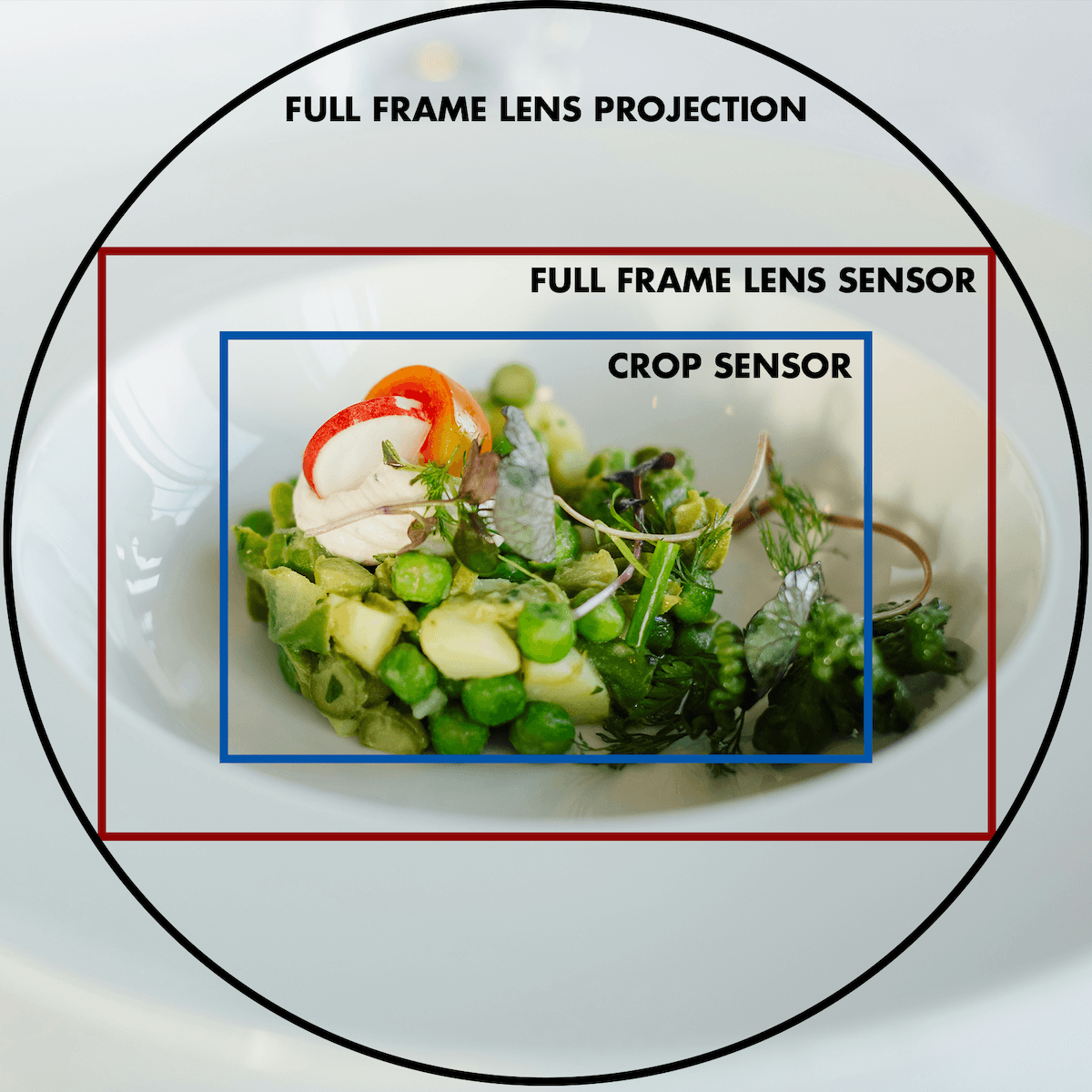
Prime vs Zoom Lenses
Your most pressing concern when shopping for a lens is sharpness. This means using prime lenses when shooting still life or food photography. Prime lenses are sharper than zoom lenses.
Zoom lenses have more moving parts to enable the zoom function. This can result in lower image quality and sharpness. At wide angles, you can also get barrel or pin-cushion distortions.
They can also cause an increase in chromatic aberration and vignetting. Vignetting is especially apparent at wider apertures.
Prime lenses are usually “faster.” They have a larger maximum aperture, which enables quicker shutter speeds. They give you a much shallower depth of field. This lets you isolate your subject and get that beautiful blurred background.
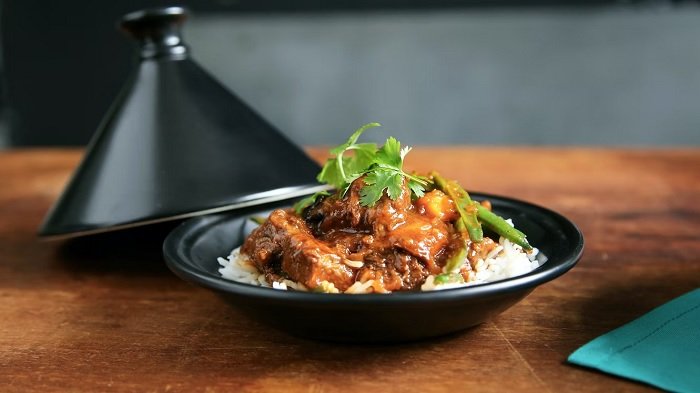
Standard Prime Lenses (Quality on a Budget)
A 50mm prime lens is one of photography’s most useful and popular lenses. It’s also a great option for food photography. It lets you take a wide variety of shots even without a zoom.
The 50mm f/1.8 is often called the “nifty-fifty” because it offers decent results for a very low price. If your budget is tight or you’re just starting out, get this lens.
For food photography, 50mm is actually considered a wide-angle lens. If you shoot only one or two items straight-on or at a three-quarter angle, too much background and surface is in the frame.
If you use the lens this way, you need large backgrounds. If the background is too small, you can see details beyond your decorated space, ruining the aesthetic you’ve created.
We’ve also included 35mm lenses in our list. Usually, a 35mm lens is too wide for still-life-style food photography. But they have macro magnification that allows for extreme close-ups.
The one on the left is at 50mm. You can see the background doesn’t take over the whole frame. You can also see the edge of the surface. The food is too far away to really see into the dish.
I took the shot on the right at 60mm. I didn’t move the camera or tripod. You can see that the extra 10mm makes a big difference.
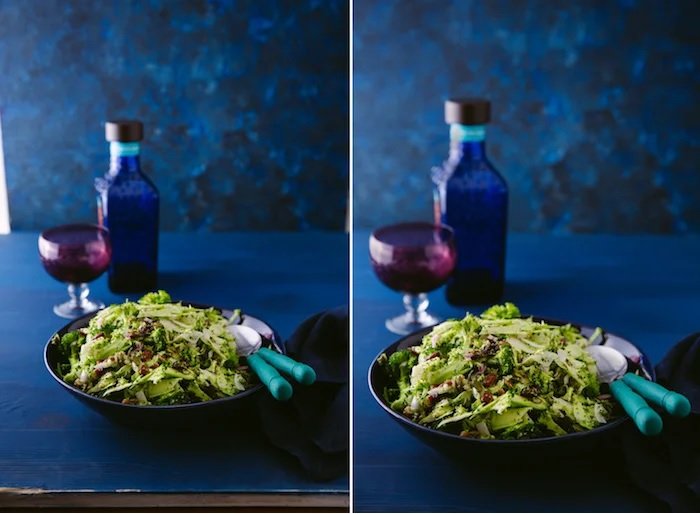
Telephoto Prime Lenses for Portrait-Style Food Images
A 100mm macro lens is outstanding to have in your kit. This telephoto lens is not only for macro and close-up shots. You can also get lovely portrait-style shots by pulling further away from your set. You will get a great blurred background.
If you buy a 100mm or 105mm macro lens for a cropped frame sensor, you will shoot at a focal length of 150mm. This is a very tight crop. It is especially tight if space is an issue or you have several props or a storytelling aspect to your images.
An 80-90mm lens is good for food photography if you want a wider shot. It’s not as wide as when you use a 50mm, but it lets you incorporate more of your scene.
I shoot a lot of food portraiture. And I sometimes find that shooting at 70mm is not quite close enough. But the 100mm gets me too close.
Also, you risk more distortion when you shoot wide open, say at 70mm on a 24-70mm lens. Zoom lenses usually function at their best somewhere in the middle of their available focal lengths.
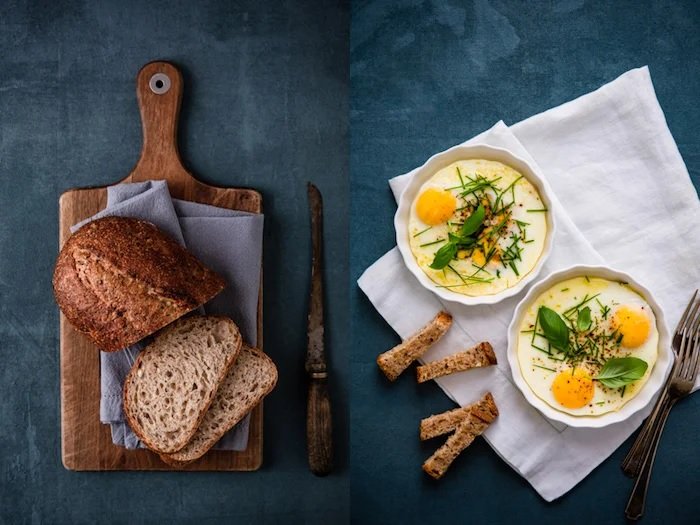
Get Closer with a 24-70mm Zoom Lens
If you want the added flexibility of a zoom lens, a 24-70mm lens is perfect. At the 24 mm end, you can shoot wide scenes. At the 70mm focal length, you can zoom in for close-ups.
While a 24-70mm zoom is ideal for food photography, other zoom lenses also work well. You can find 24-105mm lenses sharp enough for shooting food. And other focal lengths work well with this style of photography.
As stated above, zoom lenses tend to have slower maximum apertures. A good aperture range is important with food photography because of the exposure and depth of field control.
But you can get 24-70mm zoom lenses with f/2.8 apertures. That’s a great help when shooting food. These lenses cost a bit more, but it’s worth it if you’re serious about food photography.
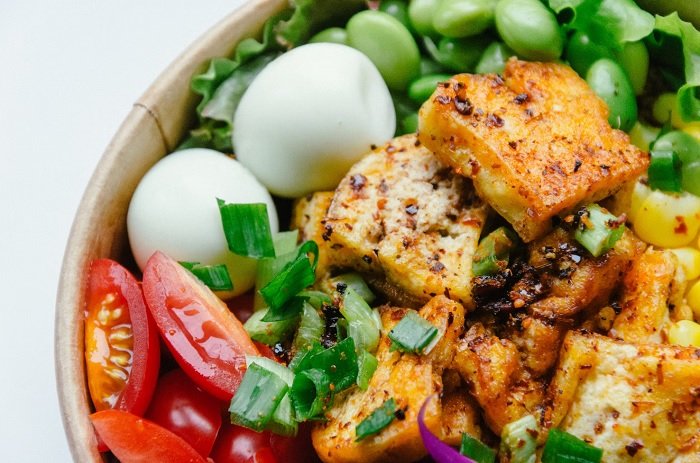
Conclusion: The Best Lens for Food Photography
Culinary photoshoots are easy with the best lens for food photography. Whether you use a prime or zoom lens, you can get detailed close-ups or wider shots of dining tables or kitchens. As long as you know the type of shots you want to take, finding a food photography lens isn’t a problem.
The Canon RF 28-70mm F/2L USM is our favorite lens for food photography. The zoom range gives you excellent flexibility and shot variation. The fast f/2 aperture gives you low-light performance and depth of field control. And it gives you crisp, sharp images throughout the zoom range.



